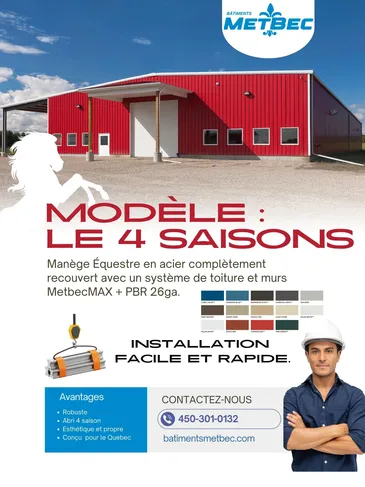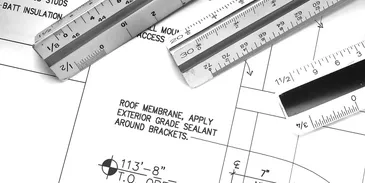


Fully clad steel riding arena with Metbec PBR 26ga roof and wall system.
Can be insulated or uninsulated.

Width: Between 60′ and 150
length: between 100′ and 500
Height: Between 12′ and 24
Slope: between 1:12 and 8:12

Prices may vary depending on your location, as our buildings are designed to comply with codes that are specific to each region of Quebec.
Prices range from $15/PC to $50/PC
With our 4-season equestrian rides
Customized solutions to meet your needs and expectations
Multilingual WordPress with WPML